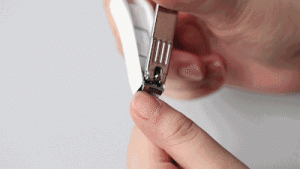
Almost everyone has heard the saying when they were young: wash your hands frequently, cut your nails frequently…
We have been told that nails are too long to hide dirt and breed bacteria, so many people will cut them very short, or even cut them “to the edge of the meat”.
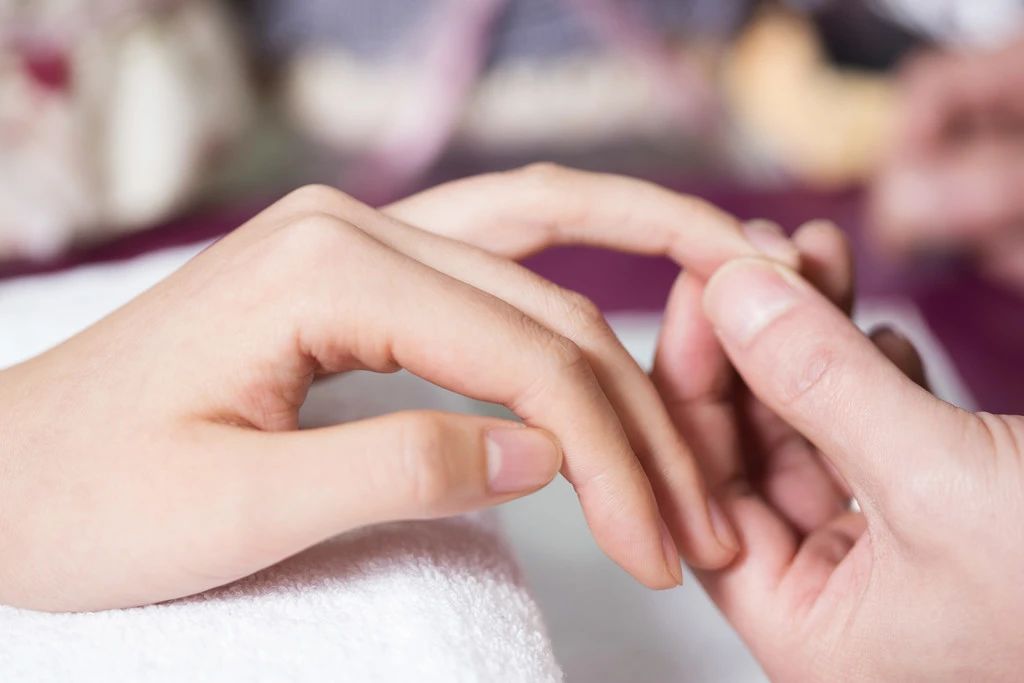
Dermatologists reminded that this seemingly “good habit” is actually wrong. Excessive trimming will cause the nails to “stuck” into the flesh, causing ingrown nails and even paronychia, which is painful.
Pay attention paronychia if the nails are too short.
The nail (toe) is a plate-like structure formed by the thickening of the cuticle cells of the epidermis. It is located on the dorsal side of the distal end of the fingers and toes. The nails on the hands are fingernails and the toenails on the feet.
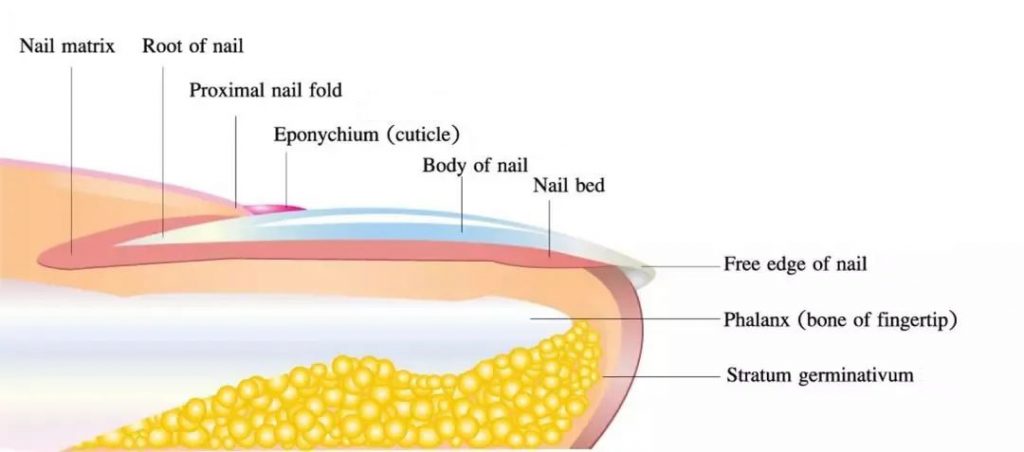
Let’s take the nails on the hands as an example. The small nails contain complex structures:
The exposed part is called the nail body, also known as the fingernail.
The deep part of the nail is called the nail bed. The nail bed is the basal part of the deep surface of the nail. It is the derived epidermis, which protects the nail and its junction with the skin. The lower dermis has abundant capillaries.
Hidden in the deep part of the skin is called nail root. The deep part of the nail root is the nail base. The nail base is the growth point of the nail. If it is damaged, the nail will not grow.
The superficial surface of the nail root and the skin bulges on both sides of the nail body are called nail folds. As the skin around the nail, it can protect the nails.
The groove between the nail fold and the nail bed is called the nail groove.
If the nail is cut too short, the skin around the nail may cover the end of the nail, and the nail will easily grow into the flesh (ingrown).
The ingrown nails cause pain, redness and swelling of the nail groove tissue. Coupled with some bad hygiene habits, the nail groove hides dirt and dirt, which can easily cause nail groove tissue infection, which is clinically called “paronychia”.
Paronychia will aggravate the symptoms of ingrown nails, the pain will be more obvious, and it will fall into a vicious circle.
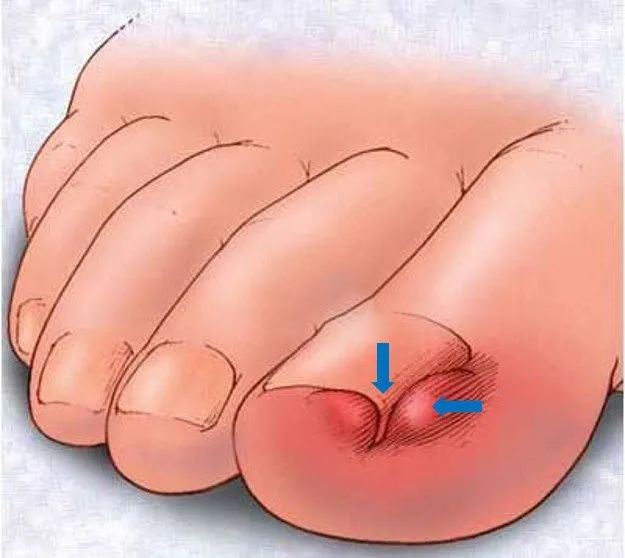
The symptom of ingrown nail is severe, or it has developed into paronychia. In severe cases, it will be damaged and purulent, and infection may spread or even sepsis. Once it occurs, you need to go to a dermatologist in time.
Remember 3 steps to cut nails correctly
If your nails are cut short, you will get paronychia. If you don’t cut them in place and leave them too long, they can easily hide dirt and breed bacteria. Remember the following steps when cutting your nails to avoid health hazards.
Soak nails in warm water before cutting
Some people’s nails are thick and hard, and they are not only laborious, but also easy to hurt their fingers.
Before cutting your nails, you can soak in warm water for about one minute to let the nails absorb water and soften. Not only does it save effort and makes the nails easy to cut, the nails will not fly around. If you find it troublesome to soak in water, it is a good time to cut your nails after bathing.
Leave 1 mm when cutting
When trimming, you must first the middle and then the two sides, so that you can easily control the length. Do not cut too deep or too short, so that the tip of the nail shows a small white edge of about 1 mm. Trimming nails has the “safest” shape: it is best to cut it into a square shape with a straight line at the front (as shown in the picture below), not an arc shape.
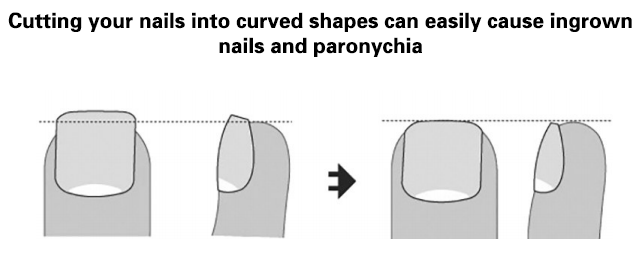
In particular, pay attention to not too deep when cutting the toenails, do not repair in the nail groove, and leave more on the outside to avoid paronychia.
Polish the sharp
After cutting, slightly trim the edges and corners, and then polish the sharp edges and corners with a nail file. In general, adults are advised to trim their nails once a week.
In addition, if the skin is dry due to skin type or seasonal reasons, and the nail edge is easy to grow barbs, you can’t tear it at will. You should use a nail clipper to trim it flat, and then apply hand cream, vaseline and other moisturizers.
Six truths about finger (toe)nails
As nails, do they grow at the same speed on fingers and toes? Is there any problem if a white spot on the nail? How to deal with fingernail crack?
The finger nails grow faster
The growth rate of nails depends on many factors, the season, the length of the fingers, hand habits, etc.
The average growth rate of fingernails is 0.1 millimeters per day, and it is completely renewed every 6 months. The growth rate of toenails is slower, which is 1/3 to 1/2 of the nails, which is about 0.035 to 0.05 millimeters per day. It takes one and a half years To be completely updated once.
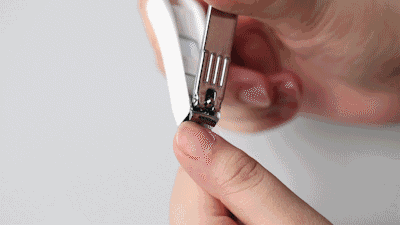
White spots are not a disease
When the stromal cells of the nail root cannot be keratinized normally, they will still be “topped” to the front by the new nail, forming a common white spot.
This is called “punctate leukoonychia” in medicine. It is mostly caused by damaged nail roots. For example, nails are clipped. Sometimes eating hands and trimming can also cause minor injuries; it may also be due to mild infections or allergies, or Side effects of specific drugs.
No matter where these wounds come from, usually, the white spots on the nails do not require any treatment and will disappear as the nails grow.
Nails and hair have the same protein
Nails are made of keratin, which is also found in skin and hair. The average thickness of a nail is about 0.3 mm, which is equivalent to 100 to 150 layers of keratin.
There are a considerable number of sulfur atoms (an amino acid containing sulfur), which can increase the strength of keratin. People with hard nails have a higher concentration of this amino acid.
Fingernails can’t breathe
Many people think that fingernails need to breathe. In fact, nails are composed of dead cells and cannot “breathe”. However, the cuticle and nail bed need oxygen, vitamins and minerals to nourish, so it is recommended to use less nail polish.
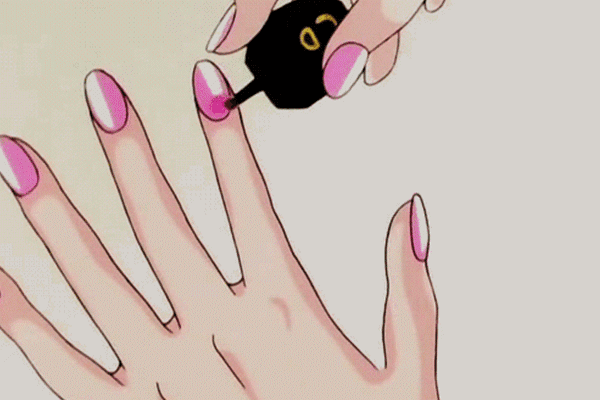
Nail art hurts the nails
The adhesive used in nail art is corrosive. Long-term and frequent nail art can cause the nail surface to lose luster, become brittle and yellow, and may also cause onychomycosis and paronychia. Chemical substances such as nail polish are irritating and may cause allergies.
It is recommended not to perform frequent manicures, and do not easily scrape the nails. People with allergies should avoid manicures.
Avoid “killer” cleaners
Our hands are always “working” and it is inevitable to come into contact with detergents, washing powders, hand sanitizers and other cleaning agents. Before touching them, it is best to wear plastic gloves to protect the oil and moisture of the nails.
Some people have cracked nails. It is recommended to keep the nails clean and apply moisturizers appropriately. Hand creams containing phospholipids or natural lactic acid can prevent nails from cracking.
Comments